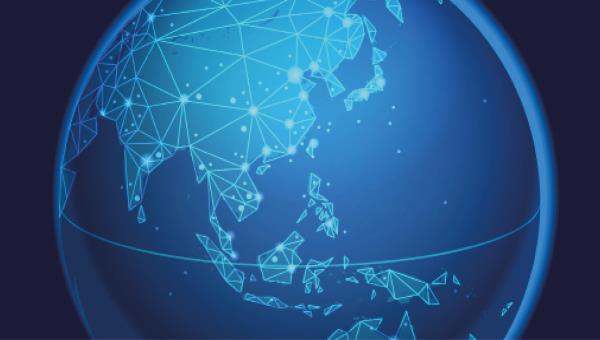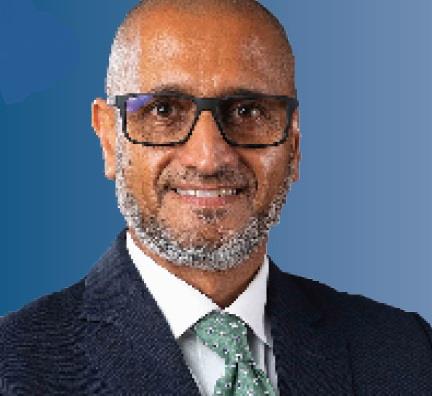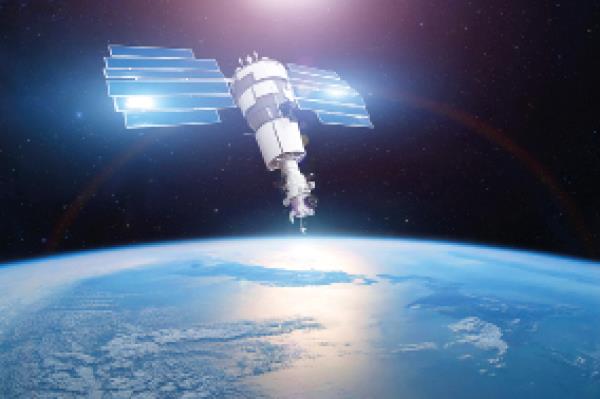06 October 2021

Broadband penetration in some of the hazardous terrains and remote parts of southern Asia is, for many, understandably low. However, with the technology currently available, should it be higher? Robert Shepherd asks those in the know
You don’t have to be a geologist or Sir David Attenborough to know that southern Asia has some of the most inhospitable landscapes on the planet. With a combination of sub-zero temperatures and hot and humid climates, its arguably the most diverse part of the world in that regard.
“For example, the Himalayas, plus over 17,000 islands in Indonesia, tropical forests and vast plains, hardly make it easy to for broadband penetration,” says Terry Bleakley, regional vice president, Asia, Intelsat. “These differences in landscape can make it difficult to access certain regions.”
While all of the above is undeniably true, this is 2021, remember? Technology allows humankind to achieve pretty much anything – whether it’s a doctor in Australia using 5G and the internet of things to operate on a patient in outer Mongolia, or a drone delivering pharmaceuticals from one country to another.
So, why haven’t we cracked the broadband and internet conundrum in this part of the world?
Well, it certainly doesn’t appear to be for want of trying, according to Richard Jacklin, ViaLite Communications, director of sales, who argues that broadband and internet penetration has never been more important. “Covid-19 has brought in ‘lockdown’, requiring adults and children to be kept within the homestead,” says. “For employees who can perform their work on a broadband connected device then connectivity to the home is essential to continue that work. Similarly for children and students, moving classes on-line also necessitates a broadband connected device. So broadband penetration is critical to enable this and reduce the number without access to the connected technology – the digital divide.”
From ViaLite’s perspective it is a supplier into the satcom broadband market, helping satellite operators and CSPs create reliable gateway hubs by connecting satcom dishes to Network Operations Centres via low loss fibre optic. It installs and help operators across all parts of southern Asia. Jacklin says the company has continued to be busy through lockdown period installing systems in southern Asia using remote support methods where necessary.
“Many of the broadband projects were initiated pre-Covid so a key indicator will be the number of projects initiated through Covid and as we hopefully exit and move to post-Covid,” adds Jacklin. “Certainly our experience in the reduction in international business travel and movement of large business events like CommunicAsia to on-line, has probably subdued the broadband rollout momentum somewhat.”
While it’s good to hear that much is being done to connect the unconnected, why does southeast Asia house so many dead zones?
Jacklin argues that, “as a supporter of satellite based broadband connectivity, we would advocate that coverage is already available”. He says that systems such as Intelsat’s Epicng and SES’s GEO and O3b MEO satellite fleet already provide substantial coverage. “It’s then a case of adequate access to power and commercial resources, perhaps by local service provider and technology integrators to basically make it happen,” he continues. “The satellite connectivity also should be integrated into the ground based fibre infrastructure.”
What about fibre? Does it have a key role to play in this space? Not in Jacklin’s eyes – and he has plenty of reasons why,
“Fibre roll-out comes with its own challenges; it’s expensive to install and requires a reasonable technical capability to produce a low-loss high performing network,” he says. “Cable cuts and re-patching is a constant risk; we often experience fibre cable losses to be twice as high in southern Asia than the ideal. But we can work around that and the long term benefits of a local fibre network are significant and present a much better broadband connection speed versus traditional copper.”
Farhad Khan, chief commercial officer at Yahsat and chief executive officer at YahClick, explains how in southern Asia, the lack of broadband is linked to the sparse distribution of communities that are in rural areas and the high cost of connection per subscriber. “Unlike in the dense urban and suburban areas, where the delivery of fibre and installation of cell towers have economic benefits for operators, the rural areas rely on USO (Universal Services Obligations) and donor funding or project funding to pay for access technology,” he says. “In addition, lack of electricity makes it difficult for operators, as diesel theft is rampant, and natural power technology costs have not reached critical mass economics. The added complication in countries like Afghanistan is that of war and conflict, where, in some areas, civilians are restricted from using the internet by rebel or military forces.” Prior to the Taliban regaining control of Afghanistan last month. internet and broadband penetration in Afghanistan is approximately 23-25% penetrated, depending on the source, with access to social media at about 12%. Of course, if you follow the news you’ll be aware that is no longer the case. What is true is that neighbouring Pakistan, it is almost 28% of the population, with access to social media at about 20%.

Farhad Khan, Yahsat and YahClick
“The added complication in countries like Afghanistan is that of war and conflict, where, in some areas, civilians are restricted from using the internet by rebel or military forces”
Intelsat is another key player in the region. Terry Bleakley, the company’s regional vice president, Asia, argues that “while basic connectivity is recognised as a critical factor in driving sustainable development and economic growth”, ensuring broadband access for the over two billion people living across the vast and geographically diverse south and southeast Asian countries can be a challenge.
“The Covid-19 crisis highlighted even more the digital divide across the region as people become even more dependent on connectivity for work but also to access news, health, finance services and education, as well as communicate with friends and family,” he says. “However, the past few years have seen an acceleration of the deployment. The south Asia region has experienced significant infrastructure investments in recent years, reducing the coverage gap from 31% in 2015 to 6% in 2019, while southeast Asia embraced the internet during the 2020 pandemic with the region adding 40 million new internet users this year, taking the total to 400 million.”
While we now have a clearer picture of the overall state of broadband connectivity – or lack thereof - in southern Asia, there is more than one barrier to improved penetration.
Khan says that besides the challenges in the roll-out of infrastructure, pricing is a stumbling block. “Whether it’s a mobile device, or customer premises equipment (CPE) for fibre/VSAT, the question is often one of affordability,” he adds. “If the CPE or device is subsidised, then cost of access is contended with essentials like rent and food, as the disposable income in some of these regions is often on average US$2-3 per day, if not less.”

Terry Bleakley, Intelsat
“South and southeast Asia have made remarkable progress over the past decade in raising income, reducing poverty and integrating into the world economy”
For Bleakley, infrastructure remains the biggest challenge for telecom operators. “Reaching the remote communities, in dire needs of connectivity, is often uneconomical or not feasible,” he says. “This creates a very meaningful opportunity for satellite technology, which is the most effective and cost-efficient way of connecting these communities. Satellite is typically the only practical way to provide connectivity to areas underserved or un-served by terrestrial networks, where economics do not make sense. Satellites’ ubiquitous coverage means that there are no ‘last mile’ issues, while the scalable and cost-effective space-based solutions can help countries meet connectivity challenges quickly.”
Two parts of the world often compared with each other when it comes to “developing nations” are Asia and Africa. Take away the major economies in the former such as Japan, South Korea, China, India and Singapore and we have (mainly) southern Asia and countries with comparable terrain, climate and poverty levels with Africa.
So, how do these two giant land masses compare in this situation?
“Broadband penetration in western and southern Asia is generally higher than Africa,” says Khan. “But as with overall internet rates, there has been an increase in the share of internet users who report use several times a day in many of the African countries.”
He points to the fact there is a strong correlation between country wealth (as measured by per-capita gross domestic product on a purchasing power-adjusted basis) and internet access. “Poorer nations, such as those in southern Asia and sub-Saharan Africa, have much lower internet rates compared with richer developing countries in Latin America and the Middle East, as well as rich nations in Europe, North America and east Asia and the Pacific – which is obvious as extreme poverty lacks affordability which hinders investment,” Khan continues. “Many of the least economically developed nations in the world are in sub-Saharan Africa, and consequently, only a quarter of the adult population across the nine African nations surveyed has internet access.”
Bleakley points to the stats to support his argument. In this case, he explains how according to the GSMA, mobile internet adoption stands at 24% in sub-Saharan Africa, against 33% in South Asia in 2019. “While this is still low compared to other regions of the world, we saw an acceleration in southern Asia with the proportion of the population connected to mobile internet almost doubling between 2014 and 2019,” he says. “This can be explained by significant investments made by operators in Asia, accelerating 4G coverage in recent years, helping 4G coverage reach in south Asia 82% in 2018, as opposed to 34% in sub-Saharan Africa.”
Bleakley adds that mobile data cost was also limiting the adoption of broadband connectivity with southern Asia having the most affordable mobile broadband, while it remained expensive for some in Sub-Saharan Africa. “However, this is changing and this is now becoming more affordable across all regions, with innovative technological solutions and new business models helping to bring the costs down,” says.
Without wanting to enter a political debate, it’s difficult to address different attitudes and approaches across a massive region without addressing the elephant in the room. In other words, could some governments do more?
“South and southeast Asia have made remarkable progress over the past decade in raising income, reducing poverty and integrating into the world economy,” says Bleakley. “Yet economic disparities remain within and between countries in the region. Governments have recognised the growing importance of enhancing connectivity in the region and the benefits it brings to people. For example, Intelsat has been working, in partnership with Lintasarta, to expand internet and mobile access across Indonesia to support the USO project for the Indonesian government - Badan Aksesibilitas Telekomunikasi dan Informasi (BAKTI).” Bleakley says “this was designed to advance the government’s goal of building a more digitally inclusive society”, providing easy access to government, education, and health services and support business operations, by connecting 150,000 sites across the country by the end of 2023. “Public-private partnerships and innovative business models can help accelerate the deployment across the whole region,” he says.
Anuj Sharma, director sales – India and SEA at Parallel Wireless points to the fact the south Asia, the eight nations comprising Afghanistan, Bangladesh, Bhutan, India, Nepal, Pakistan, Sri Lanka and the Maldives, is made up of 1.3 billion people, “yet accounts for only 2% of the Gross Domestic Product (GDP)” and 2.4% of the telephone subscribers across the globe. To put that into context, the population of south Asia alone is that of the whole of Africa.
“Accessibility to broadband communications is low yet has seen steady growth in the last decade and sustained growth is expected in the next few years,” says Sharma. “Today all urban areas in south Asia have access to telephone service. Mobile network operators (MNOs) in this region of the world need to invest in their wireless network infrastructure to meet the growing needs for affordable voice and data traffic and access to applications of the future such as digital health, e-banking, e-learning, Internet of Things (IoT), Industry 4.0, autonomous driving, and more which will propel their economies into the future.”

Anuj Sharma,
Parallel Wireless
“By utilising Open RAN networks operators are enabled to run software-based network functions on standard commercial-off-the-shelf (COTS) servers which are cost effective and easy to deploy”
Sharma adds that with Open RAN networks, hardware and software is disaggregated with open, non-proprietary interfaces. “By utilising Open RAN networks operators are enabled to run software-based network functions on standard commercial-off-the-shelf (COTS) servers which are cost effective and easy to deploy,” he says.
Having heard from those working hard to penetrate the rocky mountains and lush rainforests, it certainly sounds like things are moving in the right direction. But are things moving fast enough and can more be done?

Richard Jacklin, ViaLite Communications
“Certainly our experience in the reduction in international business travel and movement of large business events like CommunicAsia to on-line, has probably subdued the broadband rollout momentum somewhat"
Jacklin says “there’s still some way to go” to get to the types of broadband penetration rates needed for a technically advanced and connected economy. “I guess this forms a large part of the business case for new LEO based satellite services,” he continues. “LEO constellations are being built on completely different economics compared to the GEO systems; the satellites are mass produced and lightweight, the launch costs have reduced significantly as they launch large batches, and huge effort is being applied to produce lower cost user terminals. These terminals will be ideally suited for roll out across Africa and southeast Asia.”

Looking to the future, Jacklin says there’s ‘one other connectivity technology that is worth watching out for’, which he calls “cellular from above’. He concludes: “This market really is an exciting area of telecoms combining capabilities of the 4G / 5G standards interoperating with standard off-the-shelf smartphones, along with new flying platforms including stratospheric planes and LEO satellite. This really could be a game changer for the rural coverage black spots, emergency scenarios and connecting the next billion using a standard smartphone.”






